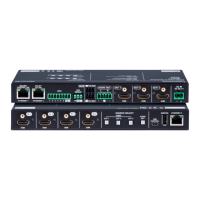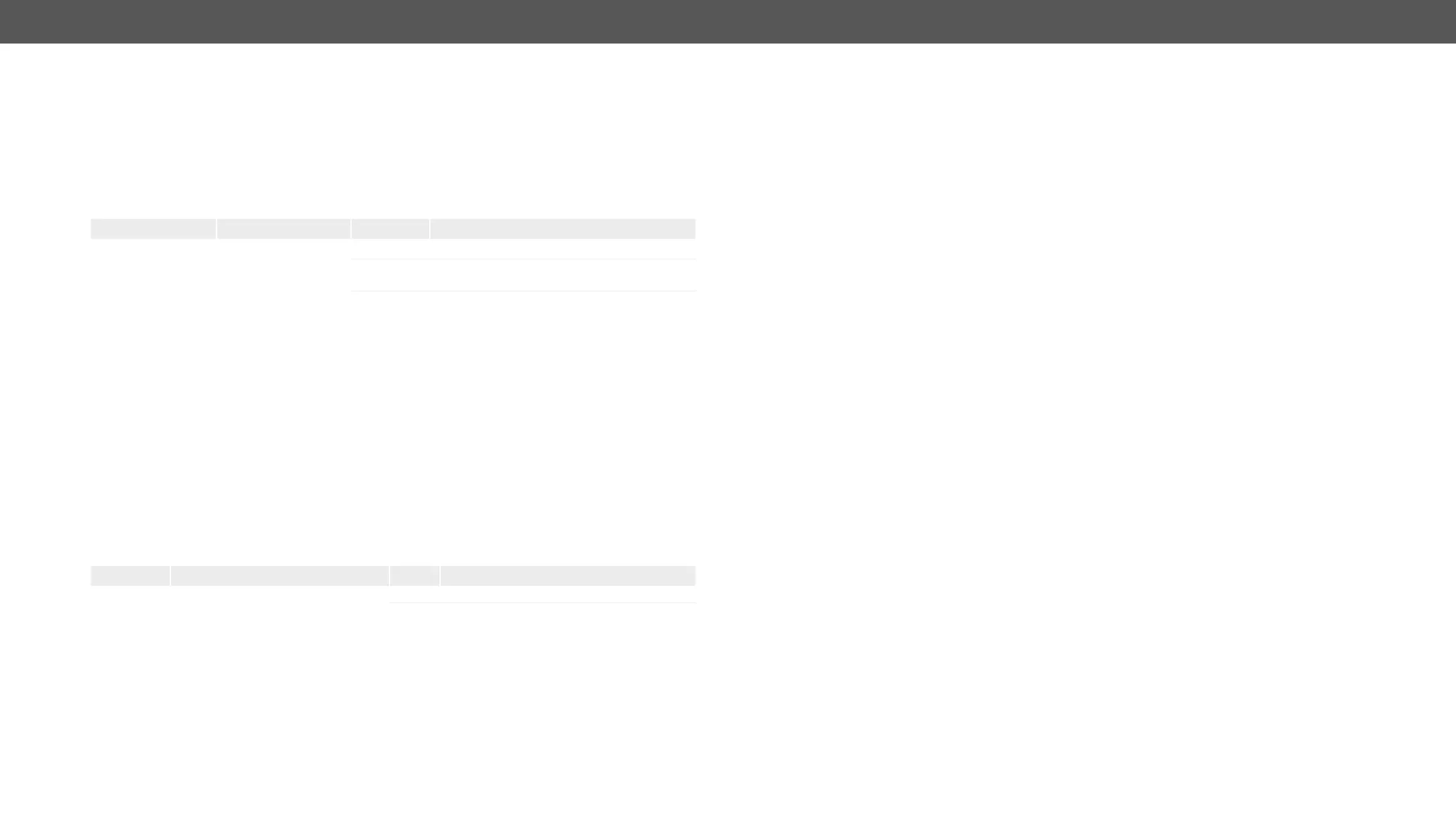Setting the Autoselect Policy
Request and Response
ɯ <ip><out>
ɯ body: <autoselect_mode>
ɮ header: 200 OK
ɮ body: <autoselect_mode>
Parameters
Parameter Parameter description
<autoselect_mode> The autoselect policy
Off
The autoselect function is disabled.
Last Detect
It is always the last attached input that is
automatically switched to the output.
First Detect
Example
ɯ
ɯ body: First detect
ɮ header: 200 OK
ɮ body: First detect
Changing the Autoselect-Included Input Ports
Request and Response
ɯ <ip><out><in>
ɯ body: <state>
ɮ header: 200 OK
ɮ body: <state>
Parameters
Parameter Parameter description
<state> The chosen input is ignored in the
autoselect process or not.
true
The port is included in autoselect.
false
The autoselect function ignores that port.
Example
ɯ
ɯ body: false
ɮ header: 200 OK
ɮ body: false
Changing the Input Port Priority
Request and Response
ɯ <ip><out><in>
ɯ body: <prio_num>
ɮ header: 200 OK
ɮ body: <prio_num>
Parameters
The <prio> parameter means the priority number from 1 to 100, equal numbers are allowed. Inputs can have
different priorities in relation with two or more outputs. Therefore the output port number is part of the node
path of input port priorities.
Example
ɯ
ɯ
ɮ header: 200 OK
ɮ
Request and Response
ɯ <ip><out>
ɮ header: 200·OK
ɮ body: <in>
Example
ɯ
ɮ header: 200 OK
ɮ body: I1
Request and Response
ɯ <ip><in>
ɮ header: 200·OK
ɮ body: ["<out1>";"<out1>"]
Example
ɯ
ɮ header: 200 OK
ɮ body: ["O1","O2"]

